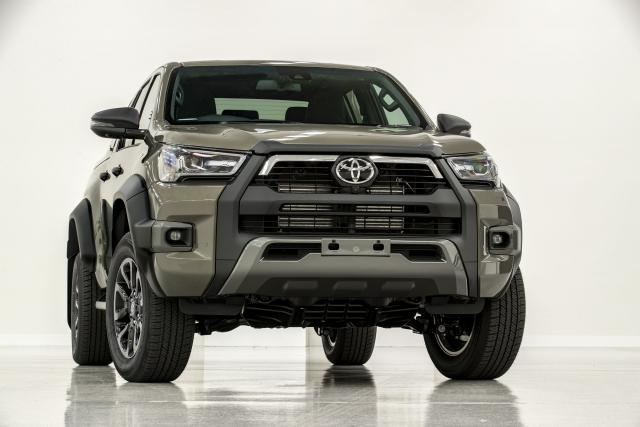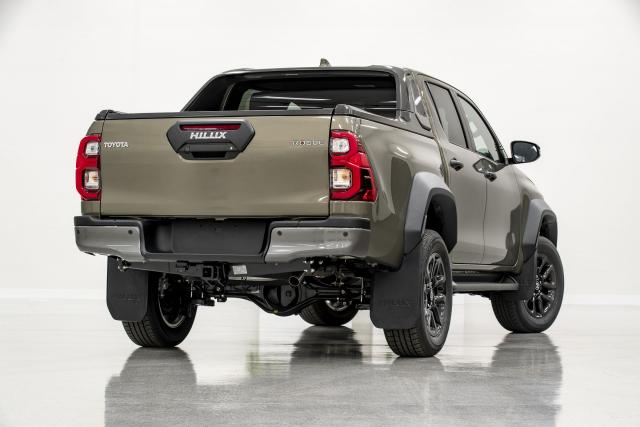Cars, computers and lawnmowers – when they go, they are great, when they don’t, they’re about as useful as a hip pocket in a singlet. That brings me to the HiLux Rogue. Among the varied dictionary definitions of ‘rogue’ comes ‘an individual deviating from the normal, usually inferior’.
My time with Toyota’s MY21 top-dog ute had a niggle or two. For a start the Aussie-designed and developed motorised roll-top tub cover pulled up short, literally, on my first attempt to store it, jamming inches away from being fully retracted. No amount of pressing opening and closing buttons freed the pesky piece of apparatus.
A little less annoying was the key fob, which was erratic with its door locking and unlocking functions activating only when a few metres from the cabin. Equivalent automotive security systems usually can be operated from greater distance to the vehicle: often handy in a crowded car park. Over to you, Toyota.
Anyway, enough of this negativity, the Rogue deserves its HiLux ‘halo’ in some respects. Generally, it’s a credit to local engineers and designers, who were tasked with producing a combination of toughness, complemented by a more recreational focus for a vehicle designed to go anywhere and be sold in markets around the world.
Toyota Australia’s role in developing and evaluating the 2.8-litre four-cylinder turbo-diesel engine, rear suspension and hydraulic power steering was supported by teams from Japan and Thailand, as well as representatives from other markets.
The Rogue sells for $68,990, plus on-road costs and options. The HiLux, in general, continues its reign as the best-selling vehicle in Australia and like all Toyota vehicles is covered by Toyota Service Advantage, with each of the first scheduled services costing just $250 each.
STYLING
Out of Toyota’s Melbourne design studio comes a dark vertical grille that cascades from the bonnet down to the prominent lower bumper and under-guard. LED headlamps, with dark internals, combine with bold outer corners of the bumper, which links to strong fog lamp surrounds.
An aggressive side profile continues the theme with robust fender flares, unique wheel-arch mouldings and an integrated resin sports bar making its debut. Wheel-arches also are generous enough to take bigger, fatter alloys than the factory-fitted 18-inchers.
A new sports bar, made from resin, is easier to mould than steel, allowing it to have a more artistic ‘sailplane’ shape.
Out back are redesigned bumper and tailgate. The tub itself is kitted out, up the walls too, like a fully carpeted lounge room, with marine-grade , the liner lifting appearance and coverage. The design makeover is made complete by a chrome Toyota tailgate badge and new decals on the tailgate and sports bar.
ENGINES / TRANSMISSIONS
The upgraded 1GD turbo-diesel engine now develops 150 kW at 3400 rpm and 500 Nm between 1600 and 2800 rpm, gains of 15 per cent and 11.1 per cent respectively.
The six-speed automatic transmission was recalibrated to allow earlier lock-up for improved acceleration and to ensure Toyota’s temperature tolerances, especially when towing, were observed.
SAFETY
The HiLux Rogue carries a five-star safety rating on 2019 testing and is equipped with Toyota Safety Sense, including a pre-collision system with autonomous emergency braking and the ability to detect pedestrians around the clock and cyclists in daylight.
It is also equipped with high-speed active cruise control, lane-departure alert with steering assist.
Electronic systems include anti-skid brakes, vehicle stability and traction control, brake assist and electronic brake-force distribution, trailer sway control, downhill assist and an emergency stop signal (hazard lights).
Like every HiLux, the Rogue is equipped with seven airbags and a reversing camera.
DRIVING
Driving has been made easier than before by work done on the rear suspension, improving unladen ride comfort while a new variable flow-control power-steering pump offers more help in low-speed manoeuvres such as parking.
Braked towing capacity has been uprated by 300 kg to 3500 kg, courtesy of the higher-output engine and a recalibrated six-speed electronically controlled automatic transmission.
Toyota claims a combined urban / highway fuel consumption of 8.4 litres per 100 kilometres. The test vehicle worked out at 11.7 litres per 100 kilometres in suburban streets down to 6.4 litres per 100 kilometres when on the motorway.
Improved ride and handling are all-encompassing with the MY20 Rogue. Leaf springs and shock absorbers were re-tuned to improve unladen ride comfort without compromising the vehicle’s ability to carry loads over uneven terrain, while low-friction rear shackle bushes add to ride comfort. Rear stability benefits from leaf spring front bushes with increased lateral stiffness.
Revised chassis mounts reduce vibrations and noise transfer to the cabin, particularly on rough roads. A variable flow control power-steering pump improves steering feeling on winding country roads and reduces steering effort when parking. Pity about the outsize 12.6 metre turning circle. There’s also a low-range mode for off-road driving.
SUMMARY
The Rogue is up against some of the stiffest competition in the premium luxury ute market (the runaway Ford Ranger Wildtrack springs to mind). It’s fair to say the power roll top would be considered an important selling point for the Hilux ‘hero’ and the failure of the accessory on test is not what we have come to expect from Toyota.








